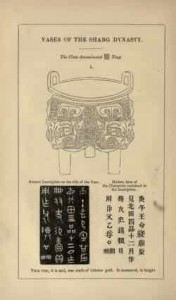Universal Brotherhood Revisited: Peter Perring Thoms (1790-1855), Artisan Practices, and the Genesis of a Chinacentric Sinology
by Patricia Sieber
from the essay’s introduction:
The case of Peter Perring Thoms, a printer by trade and a China scholar by inclination, invites us to revisit the postcolonial paradigms that stress the instrumental and statist motivations for nineteenth-century British engagement with China. Thoms (1790–1855) was once lauded in pro-Chartist circles as “the best Chinese scholar England has yet produced,” but his legacy has since been marginalized by the “enormous condescension of posterity.” A printer first in the employ of London firms, then a service sojourner for the British East India Company (EIC) in Macau, and eventually an independent master printer with his own workshop in the heart of London’s print trade, Thoms, in marked contrast to the occupational locations of other, better-studied EIC officials, falls under the rubric of an “artisan.” As scholars have cautioned, the notion of an “artisan” is inherently ambiguous and, on account of the wide variety of trades, organizational structures, and skill levels involved, artisans cannot be characterized by a singular “artisan ideology.” However, while some new trades exceeded the standard definition of an artisan—men working for wages who engaged in unmechanized, skilled labor in workshops—Thoms’s occupation as a printer fits squarely within the ambit of artisanhood that endured long after other trades had been consumed by industrialization. Equally important, Thoms proudly defined himself as a printer, viewing his profession not simply as a way to earn a living, but as a social identity that straddled technical skills and broad learning. Thus, as Mark Bevir has theorized, an artisan like Thoms would have been attuned to and confronted with a different set of traditions, practices, and dilemmas than those of the average EIC official, who was typically destined for the South China trade through hereditary appointments designed to augment family fortunes.
Thoms’s pursuit of Chinese literature and printmaking can be situated within the traditions of radicalism and romanticism. Among the circles of the educated laboring classes in Britain, China began to emerge as a trope of collective theorizing, particularly in the lead-up to and aftermath of what we now, pace the British antiwar coalition, have come to call the first “Opium War” (1839–1842). Certain segments among the working orders in Britain viewed the internationalization of commerce as an economic dilemma of foreign competition in the face of increasing mechanization and a highly unstable labor market. However, in the case of Chinese workers, British concerns over job competition did not become acute until the 1870s, and then primarily in the domain of seafaring. Instead, in the 1830s and 1840s, the radically minded laboring classes in England intent on political reform incorporated the Chinese people into their articulation of the paradoxes of political representation: far from being despotic China’s democratic other, the English government and its military were viewed by these men as a coercive institution that brutalized both the English worker and the ordinary Chinese through targeted state-sanctioned violence. Thoms, though deeply enmeshed in questions of fair pay for Chinese commoners in China and issues of anti-imperialist policymaking in England, nevertheless grounded his engagement with China in a cultural frame. In contrast to the jingoistic caricatures found in popular culture or the often high-minded condescension permeating elite discourse in Britain, Thoms opted for a radically convergent view of Chinese and English cultural production that has only recently come into focus again among modern scholars of this period. Continue reading …
In this essay, Sieber argues that Peter Perring Thoms, a printer in the service of the British East India Company in Macau, fashioned a Chinacentric sinology that cannot be readily subsumed under statist and other instrumental forms of Orientalism. Instead, neither a casual “amateur” nor an institutionally sanctioned “professional,” Thoms pioneered a translation model as a “citizen-scholar” intent on establishing literary and artistic excellence as an imaginative locus to forge transnational bonds of anti-imperialist solidarities between the Chinese and the English.
PATRICIA SIEBER is an Associate Professor in the Department of East Asian Languages and Literatures at the Ohio State University and the author of Theaters of Desire: Authors, Readers, and the Reproduction of Early Chinese Song-Drama, 1300–2000 (Palgrave, 2003).
